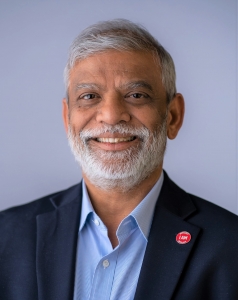No One Left Alone Addresses Cancer Health Disparities at the Local Level
As the president of the Community Oncology Alliance (COA) in 2021, during the height of the COVID-19 pandemic, Kashyap Patel, MD, was troubled by the significant health care disparities faced by racial and ethnic minorities. He started to investigate how where someone lives – down to their individual zip code – affects their ability to access quality health care.
“I was intrigued by a 2013 study from the Robert Wood Johnson Foundation, which found that life expectancy of people born in different neighborhoods in New Orleans varied up to 25 years,” he says. “People born in the French Quarter had an average life expectancy of 55 years, while those born just 10 miles northwest of that lived an average of 80 years.”
Dr. Patel saw parallels in his own practice, Carolina Blood and Cancer Care Associates (CBCCA), which serves patients in two clinics – one in a relatively affluent suburb of Charlotte and the other in the heart of rural South Carolina, where a faltering industrial-based economy led to sharp decreases in education and income levels. Many residents in that part of the state lack easy access to transportation, nutritious food and safe housing as well, making them some of the most vulnerable and marginalized patients by cancer health disparities.
These social determinants of health (SDOH) are risk factors for early mortality, says Dr. Patel, pointing to an American Association of Cancer Research study that found 34% of all cancer deaths could be prevented if socioeconomic disparities were eliminated.
“Advances in science over the past few decades have been significant and have taken us far in reducing cancer mortality, but unfortunately, not everyone can benefit from those advances,” he says. “If a patient doesn’t have something as basic as a reliable ride to and from the doctor’s office, they may miss a blood check, putting them at risk for infection. If they live in a food desert, they can’t access the healthy food they need to support their nutritional requirements. If they live in an area underserved by technology infrastructure, telehealth visits are impossible.”
Ensuring Equitable Access to Care
To address these SDOH issues, Dr. Patel launched a program called No One Left Alone (NOLA). In its pilot stage at CBCCA, NOLA focused on addressing patients’ financial insecurity and hired a new staff member to match financially needy patients with free drugs through patient assistance programs. Dedicated financial counselors completed required paperwork on behalf of patients, often applying to multiple foundations to ensure the patient had no or minimal out-of-pocket costs.
“Not a single patient was turned away for treatment regardless of their ability to pay,” says Dr. Patel.
NOLA’s second step was to improve access to biomarker and germline testing – an important indicator of the root cause of a patient’s cancer – by working with testing labs to cover the procedures as a component of their research. This alleviated the need for patients to cover out-of-pocket costs for the expensive tests. NOLA’s efforts resulted in an increase in biomarker testing from about 30-40 percent of CBCCA patients to 80+ percent.
“The need for this is critical, because only one in four eligible patients with cancer receives biomarker testing, which can help determine the most effective course of treatment,” adds Dr. Patel.
In February 2022, NOLA started to collect extensive SDOH data. They developed a detailed patient intake form to evaluate patients’ access to transportation, literacy, mental health, food insecurity, social support, and housing security. Working through a local consortium of 15 non-profit organizations, NOLA refers patients to needed services for food, housing and transportation, along with cancer screening services.
“Intervention at the local level, with social safety net solutions, is critical,” Dr. Patel says. “In fact, global studies show that countries investing in providing healthy food and accessible transportation have higher life expectancies than here in America. Our goal with NOLA is to not only serve our patients locally, but also to provide a replicable road map that can be shared with other practices around the country.”
NOLA’s next focus is building a fund to cover insurance copays for hospital visits, to further alleviate the financial toxicity facing cancer patients. Equitable access to clinical trials is another key goal. As NOLA tackles these new goals, Dr. Patel says they will continue to foster partnerships with multiple stakeholders, including local non-profits, congressional offices, the state Department of Health and Human Services and Medicaid teams, and others to create a collaborative effort.
Community Practices Drive Action
CBBCA is a model for independent oncology practices, with five physicians, four mid-level providers and eight research staff who see about 1,500-1,900 new patients annually. The practice benefits from its membership in COA, which is helping to drive action with a NOLA-like program in Texas and other initiatives.
According to a COA position statement, “COA and its members strive to recognize disparities whenever possible and are committed to being leaders in collective efforts to end them.” To that end, COA established a Health Equity Committee in 2022 to lead its efforts to address cancer and other health disparities through research and projects.
“Taking action and tackling problems like cancer care disparities at a local level is a hallmark of what the COA does,” says Dr. Patel, who is working on a cancer disparities playbook to help other community providers address equitable cancer care delivery locally. “System-level changes are important, but they take time and funding. Patients with cancer cannot wait for macro-level changes to take place.”

















